Whether you’re an independent florist, illustrator, service provider, healer or a small product business owner I can bet that you created your business so that you could have a positive impact on the world.
As a brand designer and strategist I have worked with many UK businesses helping them to create a brand that is in alignment with their values and vision. I’ve had the pleasure of working with heart centred business owners that are desperate to bring the authentic, human side to their brand. I like to call these kinds of businesses positive impact brands.
But let’s get clear and dive a little deeper, what is a positive impact brand?
Simply put, a positive impact brand is a business and brand that aims to make a positive impact on people and the planet. Just like the kindness economy puts people and the planet before profit, a positive impact brand knows and understands its unique set of values and holds them first when making any business decision, including branding.
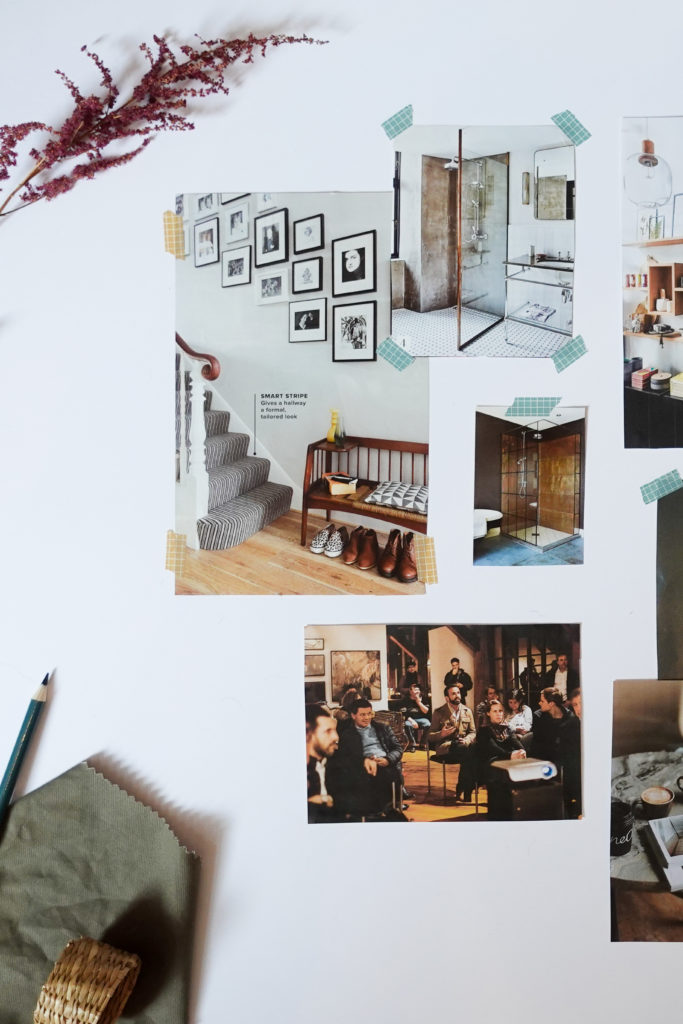
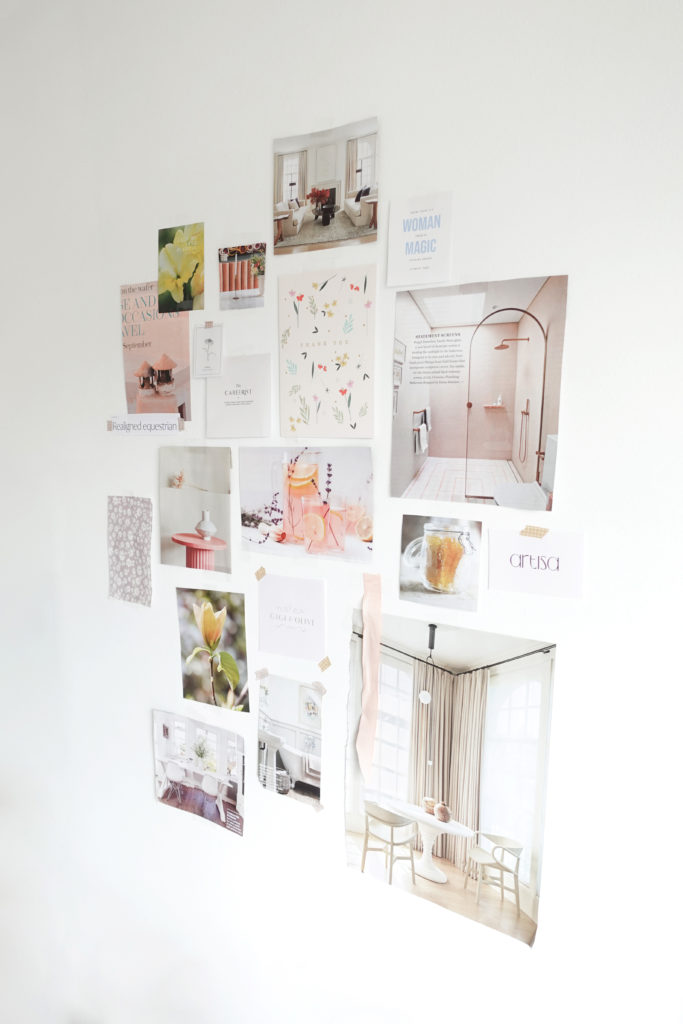
In this post I’m going to support you on your branding journey, specifically the part where you will find clarity and begin to make a positive impact moodboard for your brand.
Why should we be making a mood board for our brand? Because it is a platform to leap from when making any design and business decisions. It can become a guiding star and a map for where you want your brand to go. The best part about it is that it’s visual so it can quickly tell a story that reminds yourself and those around you what you’re all about. In this post I’ll show you how to create the foundation for a strong brand by taking you through a step-by-step process. Let’s start with the two most important elements for creating a positive impact mood board and brand, people and planet.
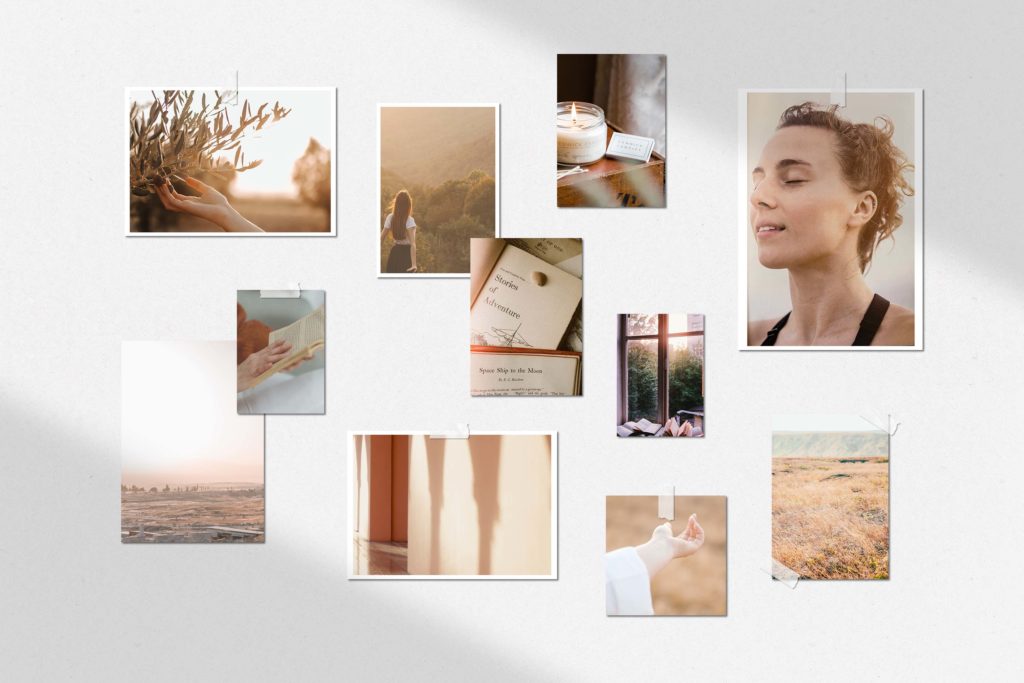
Step 1: People and Planet – your impact
People
Business is a very human transaction; so putting people as a priority is extremely important when creating a positive impact brand. I want you to think of the people that surround your brand. This includes yourself, the people that work for your business and those that you serve or sell too. It may also include your wider community and network online or in real life. It could be the people that happen to come across your content one day whilst researching online.
With those in mind, consider these three important questions:
- How will your brand make those people feel?
- What impact will your brand have on their life?
- What do those people stand for and against?
- What will those people say about your brand?
For each of these questions, note down a few ideas or stories that come to mind.
Planet
Next we’re going to focus on our planet, our home. If you’re called to make a difference for the sake of our planet then this is a point I urge you to take the time to think about. We all know, there is no planet B. Sometimes when governments and constitutions fail us it can make us feel powerless. But there are always options. I believe two of our biggest options are: 1. Vote with your money or 2. Create a business.
Small independent businesses have power, a secret weapon. We can do what big businesses struggle to do. We can do business with heart. We can bring a human essence to our business. And with that comes connection and beauty, something that all humans seek. When those “in power” let us down, you can use your brand and it’s secret weapon to make a vital difference. Again I want you to think of stories and anecdotes that answer these two important questions:
- Small or large, how will your brand positively impact the planet? Why will it impact it in that way?
- What environments will your brand create? In real life or online, how will those environments make people feel?
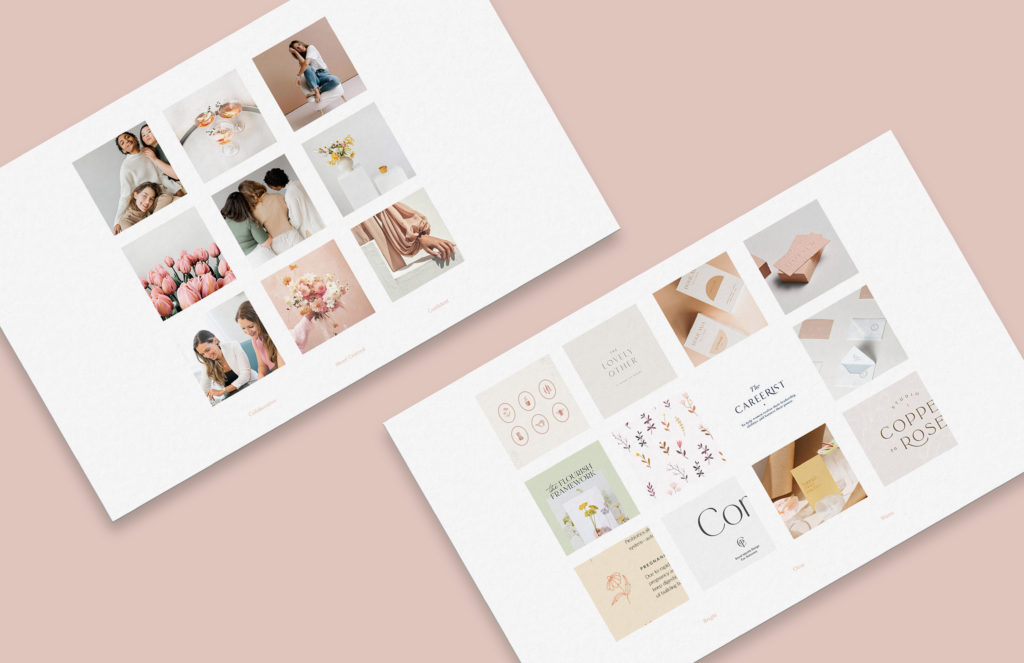
Step 2: Your brand clarity
By completing the above steps, you should have a group of notes that give you clues to why your brand exists and the positive impact it will make. Within those notes are the first clues that will begin to build your brands clarity and give you a starting point for your positive impact mood board.
To give you a clear direction when creating your mood board, firstly, we’re going to create a mini brand clarity. This will help you understand what your brand wants to achieve and how it’s going to do it. Bringing you harmony and alignment from the get go, whilst giving you an insight into how your brand will live in the world. Let’s start with your brands values:
Values
Brands have values so that people know what a brand stands for. Whether they work for the brand or they are a customer, values help people to know what to expect when experiencing a brand.
Values also help you to find and connect with your true fans, your ideal customers, who are loyal and spread the word of your brands wonderful work. You may already have brand values but it’s natural for a brand to evolve over time. I encourage you even if you think you have your values set there might be subtle tweaks that you want to make after doing this exercise.
To start, look through your previous answers and highlight phrases and words that resonate and stand out for you. Highlight things that you want to positively associate with your brand. If something appears multiple times make a note of it as this could be an important value.
Story
Story within brand design is extremely important especially for your small business. It’s where we can bring heart and humanity into our business which builds stronger connections with your customers. When running your business all you’re doing as a business owner is telling a story. There may be one big story along with lots of smaller more focused stories. The stories all intertwine to create a larger picture for your brand.
Looking at the answers you wrote down for step one try and see if there are any recurring stories? What keeps cropping up? What stories give you goosebumps or make you emotional? Which stories feel vulnerable and difficult to tell? Consider which of these stories will have the biggest impact on your audience for positive reasons. The best stories have a pattern of telling their listener what is and what could be. These kinds of stories inspire our customers and when repeated will build momentum.
Feel
This is probably the most important part of your brand clarity, and equally the hardest. I’m going to ask you to whittle down all of your notes into just three words. By now you’ll have written down a lot of notes, pulled out many phrases, words, stories and anecdotes. From them I want you to decide which 3 words perfectly encapsulate the feeling your brand will create. These three words must be able to create a feeling. For example instead of saying your positive impact biscuit brand will feel soft and chewy, perhaps use the word moreish, or indulgent.
If you’re overwhelmed with words and phrases and don’t know where to start, a good way to tackle this is by grouping those with similar themes together. Then you will create different parts of your brand that are all brought together by one connecting element, which you can then title with a stand out word that encompasses that group and will create a feeling.
Keep reminding yourself that you are choosing three words that tell you how your brand will feel. These are the feelings you’ll have as a business owner when working in your brand and the feelings that people will experience when connecting with your brand.
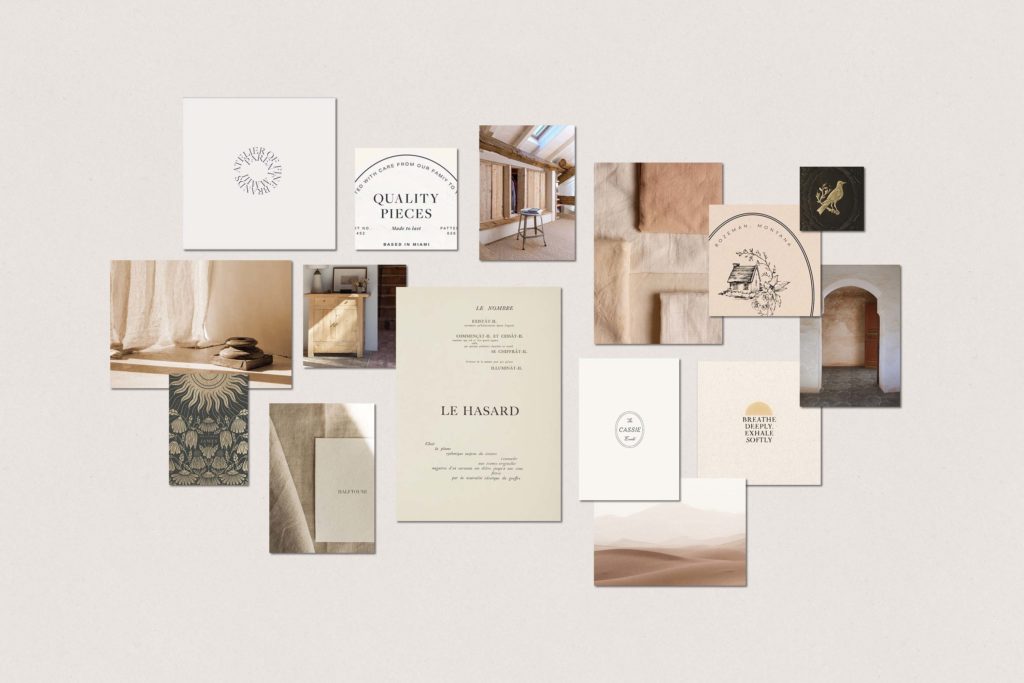
Step 3: Mood board creation
You may have noticed that I have asked you to get in tune with your feelings for the purpose of creating a positive impact brand. I know, it can be easier said than done, but the most memorable brands are the ones powered by feeling, authenticity and soul.
I think it’s important to remind ourselves and understand the definition and reasons for a mood board. To help you get a clearer perspective I have outlined the differences between that of a vision/dream board and a mood board.
- A vision/dream board is a collection of images and quotes or affirmations that inspire and remind its creator of the future they are trying to create. often used as a manifestation tool in order to bring their largest dreams and desires into their life using the law of attraction.
- A mood board for a brand similarly creates a visual landscape by using a collection of images, textures and materials. These visuals encapsulate the story of a brand and importantly create an overall feeling. A feeling that will portray the impact of a business and brand when experienced by its audience.
With those definitions in mind there’s one tip I’m going to give you before you begin to find visual material for your positive impacts mood board. That is to practise listening to your feelings and your intuition. In particular, practise understanding how different visuals and environments make you feel. Take a look at the visuals around you. Ask yourself how something makes you feel and why it makes you feel that way. You can do this with almost anything. A book cover, a birthday card, a bedroom interior design, a restaurant menu, a dining room chair, a garden layout, a paint colour, and wallpaper design, a logo. Anything you can see you can describe how it makes you feel.
If you want to dive more into this subject I suggest you read into colour psychology, including the characteristics of the seasons and how they affect us. You’ll know that I use seasons a lot as a tool when creating brands. I love exploring this subject and would love to speak to you about it if you want to learn more.
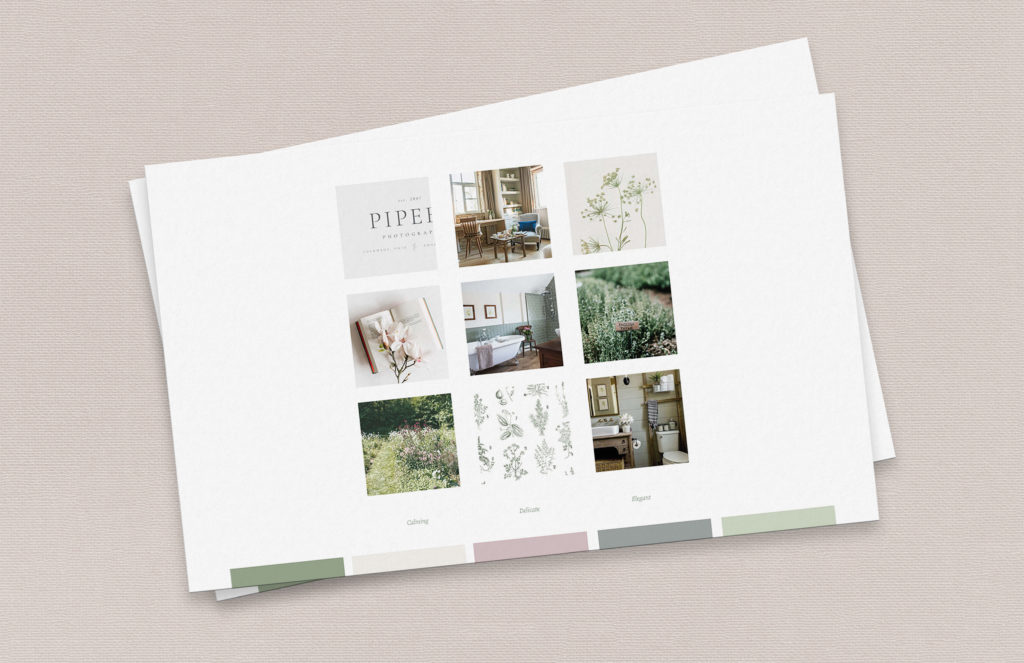
Sourcing materials
This is one of the most exciting parts of creating a moodboard, sourcing your materials. It would be wise to decide now whether you are creating either a digital mood board or a physical mood board, as this will dictate where and how you look for imagery. Personally I love creating physical mood boards over digital mood boards. I prefer the physical act of using my body to create something in my environment. Just like writing a letter is different to typing a letter, there’s a more holistic process to creating something physical.
Once you’ve decided you can be on your way to collecting materials. The key to a simple process to find images that encapsulate the three words for the feeling of your brand. Always have the other words, phrases and stories at the back of your mind when doing this, but keep it simple and use those three words as your compass.
I usually start by purchasing a few inspiring magazines or taking a trip out to find inspiration. I begin by ripping pages out of magazines or taking photos with my camera. It’s also worth having a look at your natural environment to see what inspiration mother nature can bring. Hint: adding leaves/flowers/foliage/food/material/props/small objects to a physical mood board can be super inspiring. I recommend looking at books and photography libraries. Try your best to choose and collect images that are of high quality to set a high standard for your mood board and overall your positive impact brand. A few great digital resources include Google, blog posts, Pexels.com, Pinterest, Unsplash.com.
Have fun with this and enjoy the process of collecting an abundance of images.
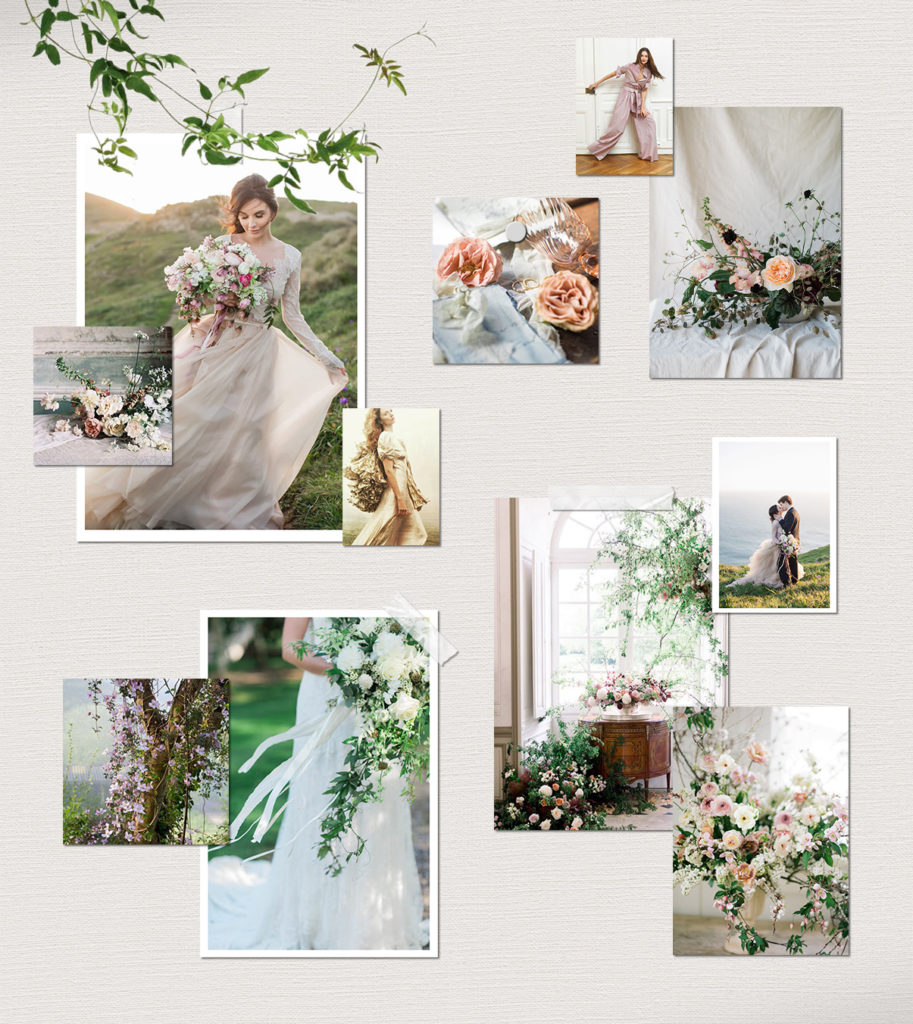
Condense and refine
Once you’ve collected an array of images and materials, spread them all out and have a good look. What stands out as not feeling right or slightly off? I assure you there will be some, so pull them out and put them to one side. Go back to your search to find imagery that is more focused and in alignment with your brand. Repeat this process until you have a bunch of images and materials that are extremely resonant with what you are trying to create. Remember if it’s not right then take it out.
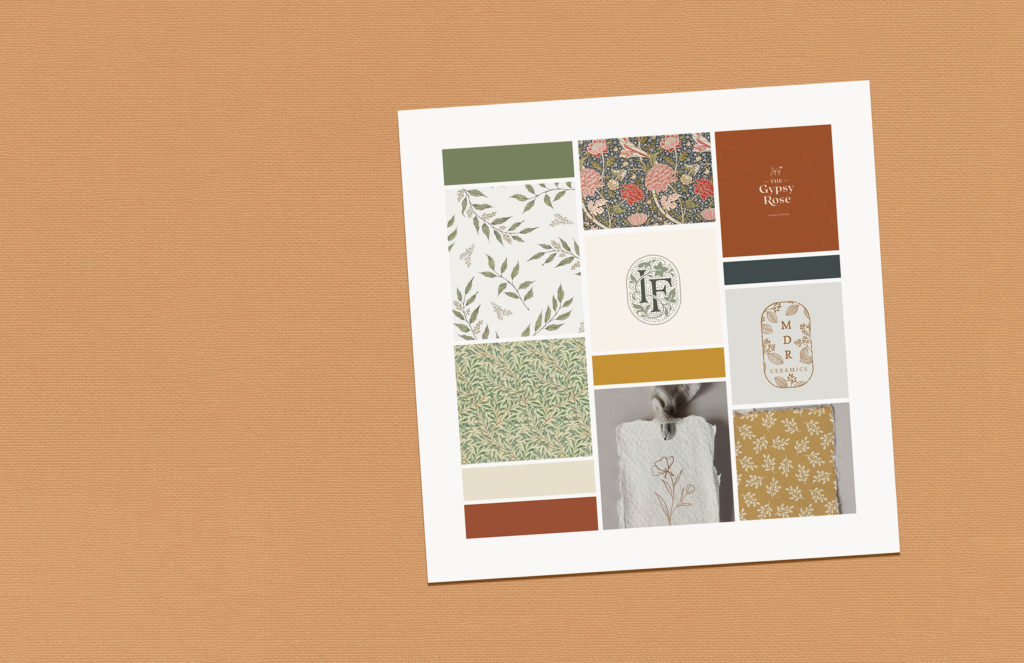
Creation
It’s now time to create your mood board. I’m going to tell you a few tips that will make your mood feel professional and elevated. Again have fun with this and take your time. You’ll know when you’ve hit the nail on the head because it will feel right.
- Hierarchy – Whilst laying out your images and materials consider what you want to be the main focus on your mood board. Where do you want the eye to be drawn first and where do you want people to look after that. Scale of imagery is important here because if all the images are all really big it’s difficult to know which image should be holding your focus more than the others. The same goes for if they’re all too small, a viewer won’t know where to look first. The brands’ most important values could be portrayed by the images at the top of the hierarchy in the layout.
- Grouping – Consider grouping together images that have a similar value or tell a similar story. Perhaps group together the imagery that links with your impact on people and and group together imagery that has an impact on the planet. Think about where these groups can be placed whether they are central or to the side of the mood board. How much importance do these groups of images hold?
- Space – You can use space to create a compact layout or a spacious layout. Images that have a lot of space around them have more power. Images that have less space around them have less power. Use space wisely to tell the story of your brand. To make anything feel elevated add more space.
- Story – once you’re almost finished creating your mood board take a step back and see if it’s telling the story of your positive impact brand. Having a critical eye to be able to decipher whether an image or material is in alignment with your brand or not is a powerful way to create a strong and resonant mood board. Remember your brand is here to create a positive impact so does your mood board tell that story?

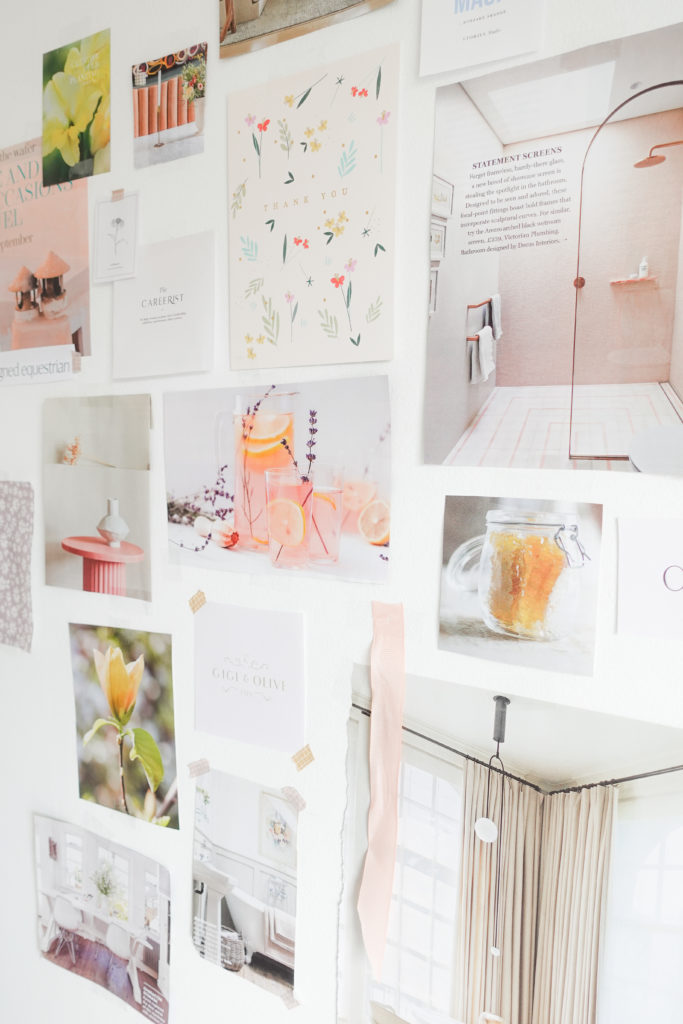
Creating a mood board is a fun and challenging process. Creating one for a positive impact brand is very fulfilling and creates a sense of purpose. Together we have worked out what your brand impact is, we have got extremely clear on how your brand will be experienced and set you up to create a beautiful mood board. If you have taken the time to go through each of these steps you will be setting up your brand with a strong and stable foundation that connects to your heart and will resonate with others.
Like I’ve mentioned I love working with positive impact brands. Because the truth is I’m not really working with brands, I’m working with people. People who are inspiring and motivating, who have big ideas and want to see them come to life. Even in the hardest of times these people show up and bring positivity to those around them.
You can see the projects I’ve worked on in the past with other positive impact brands by going to the My Work section of my website. And you can keep up-to-date with what I’m doing on a weekly basis at Chloë Georgina Design by signing up to receive my newsletter Notes from the Studio by clicking this link.

Be the first to comment